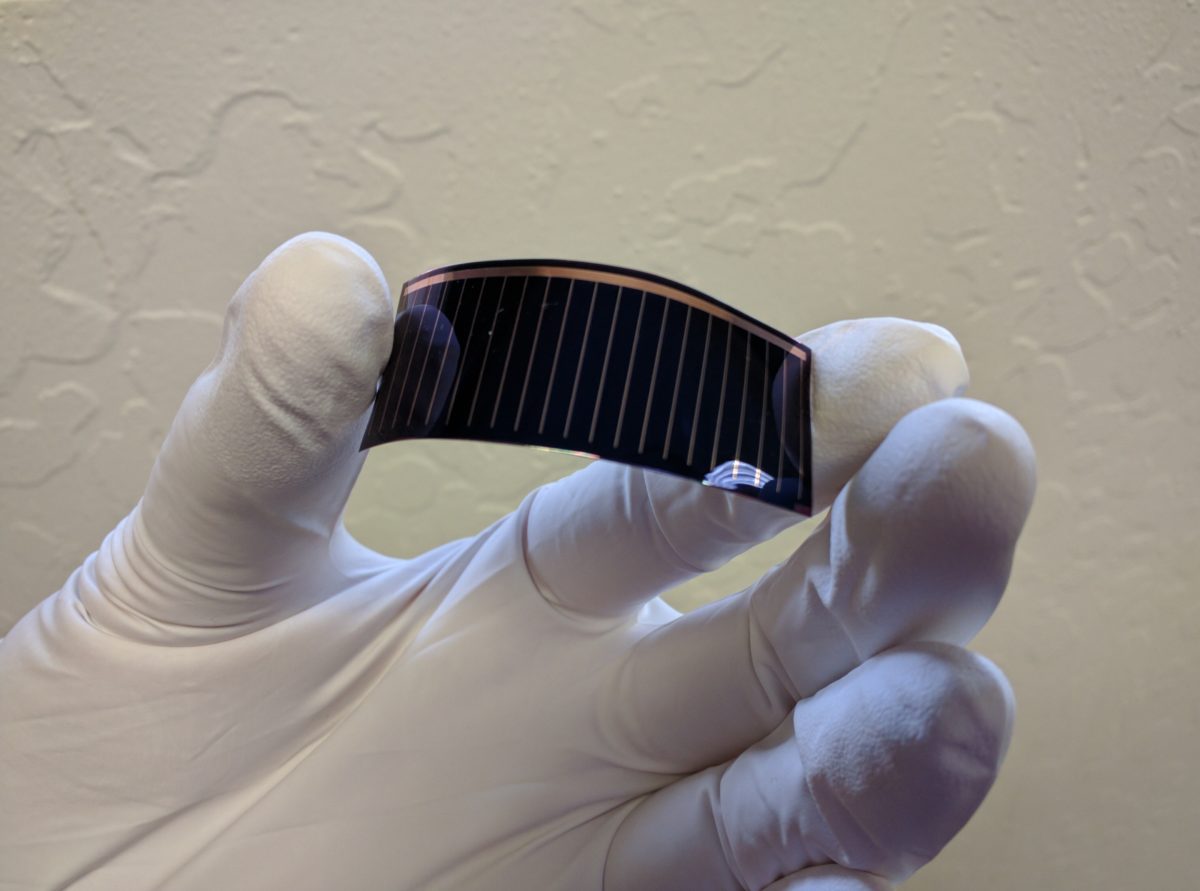California-based Alta Devices has announced a new efficiency record, achieving 28.9% efficiency on its gallium arsenide based cell. The record has been confirmed by the U.S. National Renewable Energy Laboratory.
The achievement edges out Alta Devices’ own previous record of 28.8% for this type of cell, and sits alongside the high efficiency specialist’s record of 31.6% efficiency for a dual junction cell – combining GaAs with a layer of indium gallium phosphide.
“Achieving a new record for this class of devices is a landmark because a 1-sun, 1-junction cell is the archetypal solar cell,” stated Alta Devices co-founder, Harry Atwater. “Alta has the first solar cell based on Internal Luminescence Extraction, which has enabled Alta to remain ahead of others. This scientific principle will be in all future high efficiency solar cells,” added co-founder, Eli Yablonovitch.
Luminescence extraction is described in an IEEE Journal of Photovoltaics article, co-written by Yablonovitch, as “the use of optical design, such as a back mirror or textured surfaces, to help internal photons escape out of the front surface of a solar cell.”
Popular content
Alta Devices, which was acquired by Chinese thin film producer, Hanergy in 2014, produces ultra-lightweight solar cells. Earlier in 2018, it launched its single junction cell commercially, targeting integration with drones, cars and other vehicles.
“Alta Devices goal is to continue to lead the industry in solar technology and to enable a broad range of autonomous systems. We believe this is the best way to support the innovations of our customers,” said Jian Ding, Alta Devices CEO.
This content is protected by copyright and may not be reused. If you want to cooperate with us and would like to reuse some of our content, please contact: editors@pv-magazine.com.



By submitting this form you agree to pv magazine using your data for the purposes of publishing your comment.
Your personal data will only be disclosed or otherwise transmitted to third parties for the purposes of spam filtering or if this is necessary for technical maintenance of the website. Any other transfer to third parties will not take place unless this is justified on the basis of applicable data protection regulations or if pv magazine is legally obliged to do so.
You may revoke this consent at any time with effect for the future, in which case your personal data will be deleted immediately. Otherwise, your data will be deleted if pv magazine has processed your request or the purpose of data storage is fulfilled.
Further information on data privacy can be found in our Data Protection Policy.